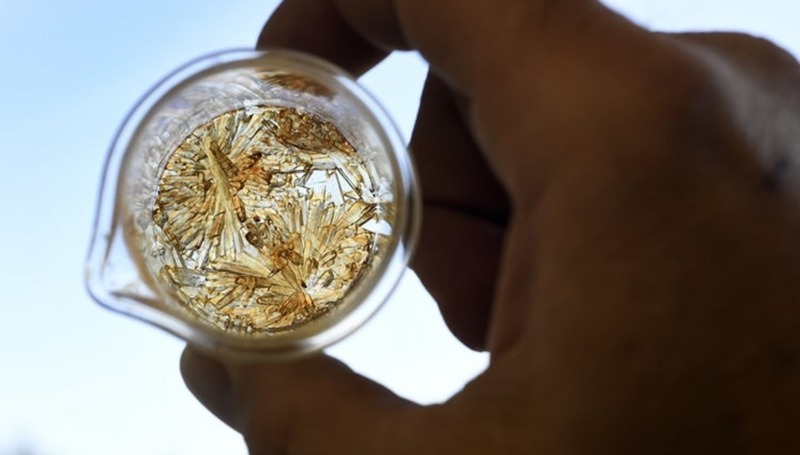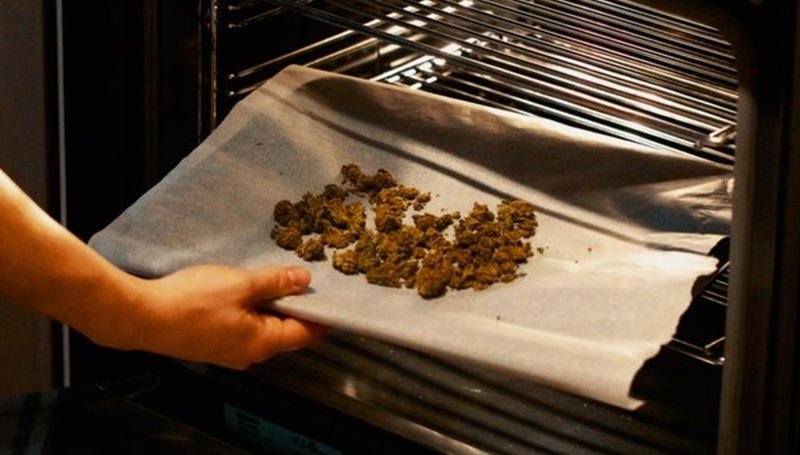There’s a reason dried cannabis bud isn’t consumed in its raw state. Unless cannabis is heated, it won’t make you high. Decarboxylation is the conversion of a sticky herb into a mind-bending medicinal plant, and it entails changing an acid (carboxyl) group on a fatty molecule. Looking to try something new? Check out this.
But first, what exactly is decarboxylation in simple terms? This article answers all of your questions about decarboxylation and how to do it correctly. First and foremost, if you want to decarb weed effectively, you’ll need a professional decarb machine.

What Is Decarboxylation?
Another way to look at decarboxylation is as a kind of activation. To “activate” your cannabis, you’ll need to break down the components of cannabis resin into their more powerful and therapeutic forms from fatty acids. Marijuana’s psychoactive “high” is caused by a chemical called tetrahydrocannabinol (THC). This THC, on the other hand, is not present in fresh cannabis plants. In fact, the psychoactive effect only appears on new plants in tiny amounts. Trichome-coated blooms, on the other hand, are high in THCA, the acid form of THC.
THC is a breakdown product of THC-Acid. THCA loses chemical connections as it ages. Small amounts of THCA are converted to THC when cannabis flowers are dried and cured. Dried buds, on the other hand, do not include enough THC to cause a psychoactive reaction.
To hasten the conversion process and ensure that as much THCA as possible is converted to its more psychoactive relative, you’ll need heat. The plant’s psychotropic potential is unlocked by smoking, vaporizing, or otherwise heating it.
The conversion of THC-Acid to psychoactive THC is called decarboxylation. Often referred to as “decarbing,” understanding this basic science is helpful for both marijuana users and chefs.
Decarboxylation explains why smoking cannabis is one of the most common methods to consume the plant, but decarbing and concentrating your bud and concentrates before cooking is a guaranteed way to create strong edibles.
What is Decarboxylation and Why is It Important?
The alchemy that transforms cannabis into a powerful culinary ingredient is decarboxylation. Simply defined, it’s a chemical reaction in which raw cannabis is heated to the point that it releases a carboxyl group and becomes psychoactive.
THCA (Tetrahydrocannabinolic acid) is the active component in raw cannabis, and it isn’t always psychoactive. We’re essentially heating plant material to make THCA convert to THC so that we can get high.
Chemistry of Decarboxylation
Raw cannabis contains more carboxyl rings in its chemical structure than heated cannabis. For the purpose of this post, we’ll focus on THC and CBD, which are the two most often seen.
Because of the influence heat has on their chemical structure, the extra carboxyl group is removed throughout decarboxylation. The molecule releases a carboxyl group after enough heat has been applied.
This is also true for CBD. Both CBD and THC acids are carboxylic acids that decompose readily when heated.
Remember to Decarb Edibles at Lower Temperatures
Decarbing cannabis is usually best performed at high temperatures. In fact, you are decarbing it by applying heat when you use a lighter to ignite marijuana in a pipe, joint, or bong or switch on a vape pen! However, when it comes to edibles, cannabis should be decarbed at lower temperatures for longer periods of time.
It’s easy to incinerate cannabinoids if you use the wrong temperatures or decarboxylate for too long. When decarbing edibles, lower heat and longer cooking times allow users to keep the cannabinoids (especially THC, which produces psychotropic effects) and terpenes (the aromatic compounds found in plants that have their own set of benefits and give cannabis its flavor).
Furthermore, decarboxylation at lower temperatures leads to the conversion of THCA to THC rather than CBN, which is a sedative cannabinoid. Low and slow is critical. Let’s go over how to decarb in further detail so you can use cannabis in all of its forms at the right potencies for your medical requirements.
Does Heating Up Weed Make It Stronger?
When you consider that decarboxylated cannabis includes activated chemicals that are psychoactive, it’s easy to see why heating it up makes it more powerful. Heating marijuana is necessary for converting THCA and CBDA into THC and CBD.
Why Decarb Cannabis
THCA or CBDA are the raw or non-decarboxylated cannabinoid components referred to as “acids” in the cannabis community. Cannabidiolic acid (CBDA), a non-psychoactive cannabinoid, is an acidic precursor to potent CBD. Similarly, tetrahydrocannabinolic acid (THCA) is not psychoactive until it is converted into the more well-known compound THC. When you eat raw cannabis, for example, there isn’t much of a psychoactive effect or “high.” Cannabis that has been decarboxylated becomes psychotropic.
Obviously, this is crucial for individuals who want to get the psychoactive effects of their cannabis edibles, oils, tinctures, or other products. The advantage goes far beyond simply feeling “high.” In their decarboxylated states, THC and CBD exhibit scientifically proven powerful healing properties. This includes alleviating anxiety, pain, inflammation, and a variety of other ailments. THC and CBD readily absorb into our bodies and collaborate freely with our endocannabinoid system to perform their functions.
On the other hand, THCA and CBDA, which are raw acid forms of THC and CBD (THCA and CBDA), also have some promising but lesser-known drug therapies of their own. As a result, those who want to achieve a full-spectrum, ultra-healing effect may wish to combine raw and decarboxylated cannabis in their homemade oils and salves.
